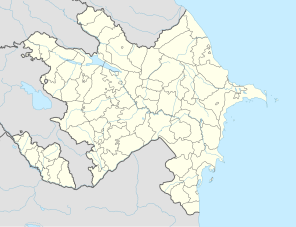| This article needs additional citations for verification. Please help improve this article by adding citations to reliable sources. Unsourced material may be challenged and removed. Find sources: "Tnjri" – news · newspapers · books · scholar · JSTOR (May 2022) (Learn how and when to remove this message) |
| Tnjri | |
|---|---|
 Tnjri in summer Tnjri in summer | |
 | |
| Native name | Տնջրի |
| Species | Oriental plane |
| Coordinates | 39°41′49″N 46°56′55″E / 39.69684006256945°N 46.94850748596971°E / 39.69684006256945; 46.94850748596971 |
Tnjri (Armenian: Տնջրի /tənd͡ʒəˈɾi/, from տնջրի tnǰri, which in the Karabakh dialect means ‘plane tree’) is a 2044–2045-year-old giant Oriental plane tree situated nearby the village of Skhtorashen, Azerbaijan.
The hollow of the tree is 44 m (470 sq ft), where more than 40 people can stand. The area covered by the foliage of the tree is 1,400 m (15,000 sq ft). The circumference of the tree is 27 m (89 ft) and the height is more than 54 m (177 ft) which can be compared with an 18-story building. The tree is situated on a valley not far from the village and stands the Tengru spring, which is the main source of irrigation for the tree.
The tree has been visited by many famous people - such as the inventor of the Armenian alphabet Mesrop Mashtots (5th century AD), the first Armenian historian Movses Khorenatsi (5th century AD), and musician and poet Sayat-Nova (18th century). Every year thousands of pilgrims and tourists who visit Artsakh also come to visit the Tnjri chinar (platanus in Armenian) tree. Tnjri serves as a local shrine.
Gallery
References
- "Tnjri (Skhtorashen plane-tree)". Wondermondo. 13 April 2014.
- (in Armenian) Mkrtchyan, Shahen. Historical-Architectural Monuments of Nagorno Karabagh. Yerevan, 1989, p. 173-714. (Շահեն Մկրտչյան, «Լեռնային Ղարաբաղի պատմաճարտարապետական հուշարձանները»).
This Azerbaijan-related article is a stub. You can help Misplaced Pages by expanding it. |



